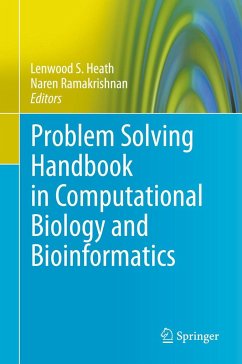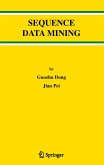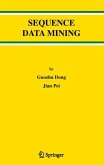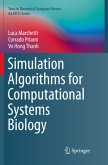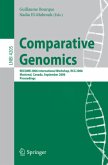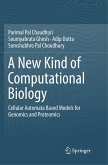Bioinformatics is growing by leaps and bounds; theories/algorithms/statistical techniques are constantly evolving. Nevertheless, a core body of algorithmic ideas have emerged and researchers are beginning to adopt a "problem solving" approach to bioinformatics, wherein they use solutions to well-abstracted problems as building blocks to solve larger scope problems.
Problem Solving Handbook for Computational Biology and Bioinformatics is an edited volume contributed by world renowned leaders in this field. This comprehensive handbook with problem solving emphasis, covers all relevant areas of computational biology and bioinformatics. Web resources and related themes are highlighted at every opportunity in this central easy-to-read reference.
Designed for advanced-level students, researchers and professors in computer science and bioengineering as a reference or secondary text, this handbook is also suitable for professionals working in this industry.
Problem Solving Handbook for Computational Biology and Bioinformatics is an edited volume contributed by world renowned leaders in this field. This comprehensive handbook with problem solving emphasis, covers all relevant areas of computational biology and bioinformatics. Web resources and related themes are highlighted at every opportunity in this central easy-to-read reference.
Designed for advanced-level students, researchers and professors in computer science and bioengineering as a reference or secondary text, this handbook is also suitable for professionals working in this industry.
From the reviews:
"The editors of this handbook ... have 'collect(ed) together, in one place, the algorithms and methods that form the modern bioinformatician's toolkit.' ... Each chapter contains an introduction to the respective topic, detailed descriptions of the relevant algorithmic methods, software implementations, and applications, and concludes with advanced topics. ... this handbook provides some value for researchers and practitioners in the field. ... In summary, for most of the topics covered, this book complements the standard textbooks in a useful way." (Gunnar Klau, ACM Computing Reviews, June, 2011)
"The editors of this handbook ... have 'collect(ed) together, in one place, the algorithms and methods that form the modern bioinformatician's toolkit.' ... Each chapter contains an introduction to the respective topic, detailed descriptions of the relevant algorithmic methods, software implementations, and applications, and concludes with advanced topics. ... this handbook provides some value for researchers and practitioners in the field. ... In summary, for most of the topics covered, this book complements the standard textbooks in a useful way." (Gunnar Klau, ACM Computing Reviews, June, 2011)

